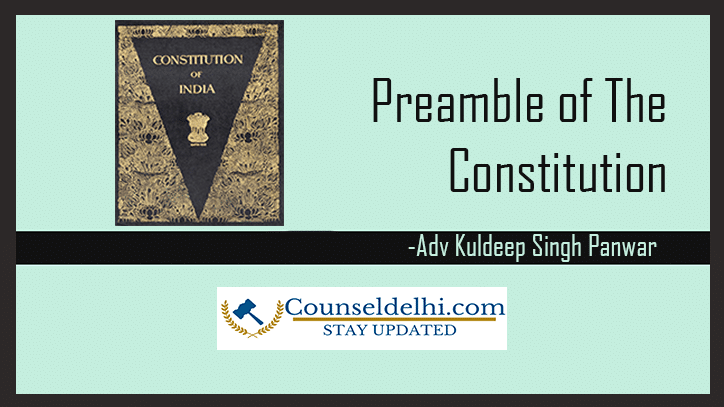INTRODUCTION:
The “Commercial disputes” have been defined with an inclusive definition and it covers almost all disputes arising out of the commercial activities. This Act provided for the making of Commercial Courts and such other Courts in the State High Courts that would be specifically dealing with the commercial matters, direct or indirect, of up to a specific monetary amount. The State Governments of all States would be setting up such Commercial Courts at the District Level, enshrining them with the proper powers and jurisdiction to handle the concerned matters.
This constitution was to be generally done after discussion with the State High Courts and these governments may also set up the limit of the maximum monetary value with which these Courts can deal with to be three lakhs or higher, either for the entire state or just a part of it. The jurisdiction limit of these Commercial Courts, area-wise, is also at the discretion of the states. This Act was brought into force for setting down a proper procedure and for quicker solving of disputes of commercial nature. It laid down strict timelines for the filing of documents and for the announcement of judgments.
With the 2018 amendment of the Act, mediation was made compulsory for all the disputed parties to go in for mediation before bringing the case to the Court. ‘Mediation’, according to the Black Law’s Dictionary, means “Intervention; interposition; the act of a third person who interferes between two contending parties with a view to reconcile them or persuade them to adjust or settle their dispute.” In layman terms, it is known as the “out of court settlement”. Mediation was never very popular when it came to solving commercial disputes but slowly, it is gaining a foothold in the Indian judiciary system. This is a quicker, cost-effective way of resolving disputes, thus, shedding the over-burdened judiciary with the weight of the backlogged cases.
Salient features of the Act:
- Three Courts: Commercial Court, Commercial Appellate Court, and Commercial Division.
- It would solely be dealing with transactions related to monetary exchanges with commercial value.
- A ‘specified value’ is a limit that has been set for dealing with matters not below the sum of Rs. three lakhs.
- The Act facilitates adequate as well as continuous training of the appointed judges to deal with such matters.
- Multiple amendments to the Civil Procedure Code of 1908 have been brought into force with this Act.
- Appeals would be time-bound and would have to be disposed off within a period of six months.
- The relief to seek mediation would have to be exhausted before approaching the Court.
- Judges having experience with commercial disputes would be the ones who would be nominated and appointed by the Chief Justice of the High Courts.
IMPORTANT SECTIONS / PROVISIONS:
- Section 2(1) (c): This section deals with the definition of “Commercial Dispute”. It includes various specific transactions of the monetary kind. It is of the exhaustive kind.
- Section 2(1) (e): The term “Specified Value” has been mentioned here. Earlier this value was one crore but then was amended to three lakh rupees. This clause specifies that disputes below the quoted figures would not be entertained in such Courts.
- Section 3: The State Governments were to indulge in the constitution of the Commercial Courts, Commercial Appellate Courts, and Commercial Division was to be done after consultation with the respective State High Courts. Appropriate authority and jurisdiction would be installed with such Courts.
- Section 6: This enshrines upon these Courts the jurisdiction to try all the pleas within the territories that it has been permitted to operate in.
- Section 10: This section provides that all the pleas and appeals of matters related to arbitration shall be dealt with the provisions as laid under the Arbitration and Conciliation Act, 1996.
- Section 12A: This section mandates it for non-urgent disputes to go exhaust the relief of mediation before approaching the Court.
- Section 13 and 14: Appeals against the verdict has to be filed within sixty days. Appeals have to be disposed off or resolved within six months of the filed appeal.
- Section 16: The Act brings in multiple amendments to the Code of Civil Procedure, 1908 which have been mentioned under this section.
- Section 17: A record has to be maintained of all the cases which have come into the Court, their hearings, the appeals filed and the status of the case along with other details.
- Section 19: The infrastructure of these Courts shall be provided by the respective State Governments.
- Section 20: There is this provision for the appointment of judges with experience in this field and to provide them with appropriate training as well.
- Section 22: If there arises in difficulty in the implementation of this Act within the initial two years, then the Central Government may make provisions for the removal of that difficulty.
IMPORTANT AMENDMENTS TO CPC AND PROJECTED TIMELINE OF LITIGATION:
| Proceedings | Timeline | Amendment to Code of Civil Procedure, 1908 |
| Suit/ Plaint | Plaintiff may seek to leave to file additional documents within 30 days of filing the Suit | Order XI(4) |
| Written Statement/ Counter-Claim | To be filed within 30 days and not later than 120 days from the date of service of summons. | The proviso to Order V Rule 1 |
| Inspection / Filing of Documents | Parties to complete inspection of documents within 30 days from the date of filing the Written Statement or Written Statement to the Counter Claim whichever is later. The Court may extend the time limit upon application at its discretion, but not beyond 30 days in any event. (Therefore a maximum of 60 days) | Order XI(3)(1) |
| Statement of Admission / Denial of Documents | To be completed within 15 days of completion of inspection or any later date fixed by the Court. | Order XI(4)(1) |
| Case Management hearing | The court shall hold first case management hearing not later than 4 weeks from the date of filing of Affidavit of admission or denial of documents by all the parties to the suit. | Order XV-A |
| Framing of issues and conclusion of oral arguments | The court shall ensure that arguments are closed not later than 6 months from the date of the first case management meeting | Order XVA(3) |
| Written arguments | Party to submit written arguments 4 weeks prior to commencing oral arguments | Order XVIII (Substitution in Rule 2 for Sub-Rules (3A) to (3F) |
| Judgment | Commercial Court, Commercial Division or Commercial Appellate Division shall within 90 days of the conclusion of arguments pronounce judgment | Order XX (Substitution for Rule 1) |
Clauses regarding mediation:
Meditation has existed in India but has not been a usually sought option. Industrial Disputes Act’s Section 4(1) provides for the mediation of industrial disputes through mediation. There have also been instances where the Court has ordered the parties to first make attempts to resolve the dispute through mediation. In M Siddiq (D) Thr Lrs v. Mahant Suresh Das & Ors, when the appeals against the High Court’s order were filed in the Supreme Court, the apex Court first directed the concerned parties to seek mediation.
The Commercial Courts Act’s Section 12A provides that the parties in dispute first have to approach the relief of mediation before approaching the Court to try to dissolve their discourse. Parties seeking urgent interim relief are exempted from this following this otherwise compulsory step. Commercial Courts (Pre-Institution Mediation and Settlement) Rules of 2018 have to be followed while going in for mediation. Parties are initially granted a period of three months to file the documents and complete the procedure of mediation; this period can be extended for two more months with the consent of the parties. As per these same Rules, confidentiality has to be maintained by the mediator(s) while dealing with each party. They cannot disclose information about the other party to their counters during any of these mediation sittings.
If a settlement is arrived at during the mediation process, it will enjoy the position of the arbitral award as has been provided under Section 30(4) of the Arbitration and Conciliation Act of 1996. This agreement has been in the written form and be signed by the involved parties.
In the case, M/s M.K. Food Products v M/s S.H. Food Products, a civil petition was filed in the Commercial Court on the matter of copyright infringement seeking urgent interim relief but was rejected by the Court deeming for it not to be an urgent matter that needed immediate attendance and was directed to first go through the procedure of mediation. An appeal against the same was filed in the Telangana High Court. The High Court ruled that such matters would fall under the category of parties pleading urgent interim relief and should not have been rejected in the Commercial Court for not seeking mediation as the first attempt to relief.
Conclusion:
This Act has primarily been brought into the country’s judicial system to boost the business and solve these commercial disputes and differences in a quick and efficient manner. These Courts have been set up to break the notion of Court processes being cumbersome and long drawn. It brings a change into the civil justice system of India and due to there being a quick and systematic procedure that solves business rifts; it invites and attracts major investors, charging the economy of the country.
India will finally have exclusive Commercial Courts for a wider horizon of commercial disputes in as much as it shall have jurisdiction even for disputes as small as an amount of Rs. 3 lakhs and more which previously was contained for only disputes involving Rs. 1 Crore and above.
The specialized courts will evolve with speedy trial and corrective results in corrective disputes as well. This is a measure seen as the second biggest reform for speedy trial in commercial disputes after the Arbitration & Conciliation Act was amended to expedite the arbitration process in India.
The Act ensures coordination between the High Courts and the State Governments. All the details have been very specifically and meticulously been laid down in the Act, thus, making the implementation even easier. The provision of proper definitions and processes, developed infrastructure, well-trained judges, and a record system are all the plus points of this Act.
Its provision of mediation has also brought ease and efficiency in the methods of solving these disputes. It highlights another way of seeking relief for those involved in businesses. Though mediation has been a part of the judicial system for a long period of time, it is the mind-set and the attitude which proves to be a roadblock. The Act mandates approaching mediation primarily; this initiative is a step towards justice being provided at the earliest with low-cost procedures. It will help mediation gain a proper foothold in the relief sought by the commoners.





